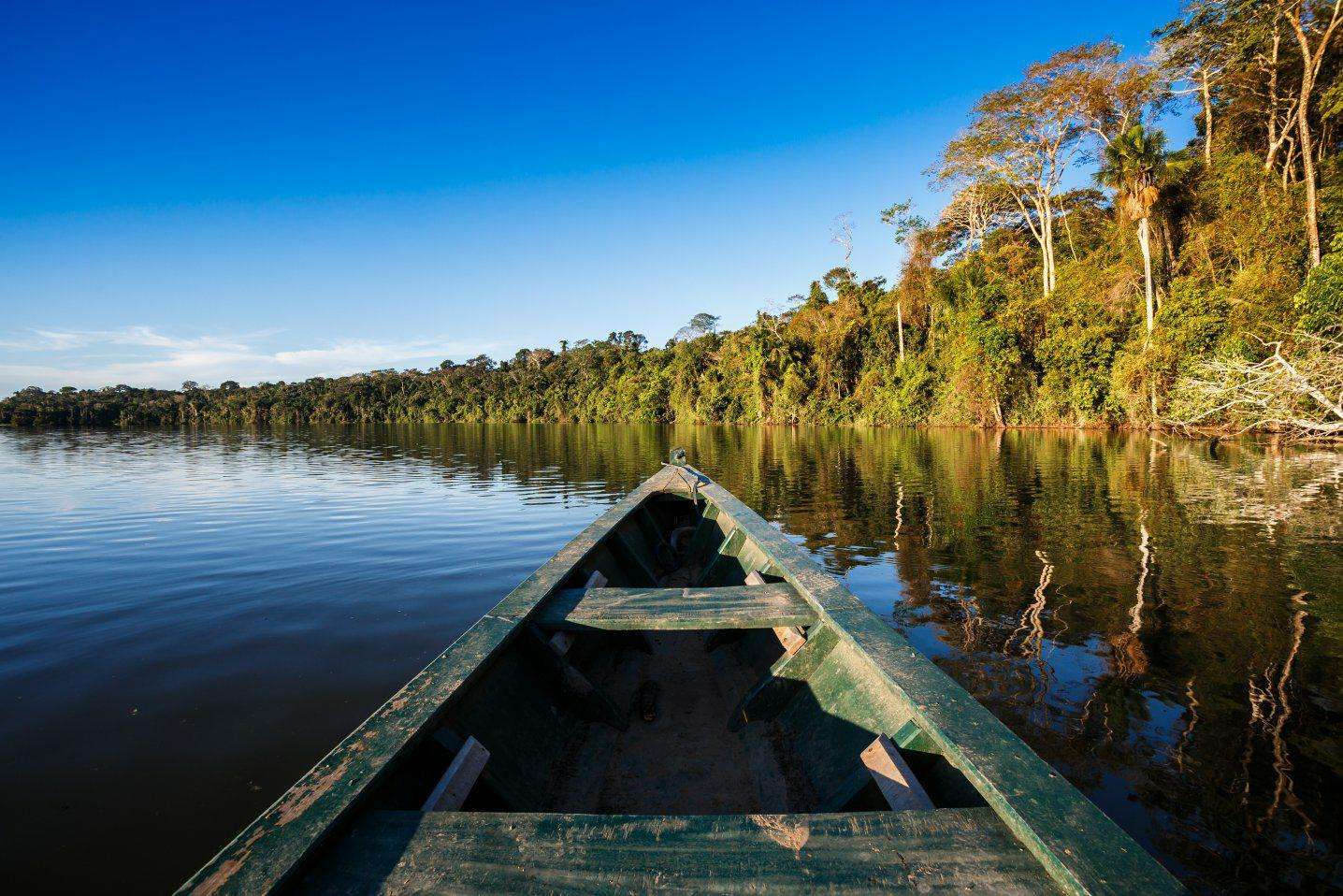
Sustainable development cannot be achieved without meaningful stakeholder engagement. In order to strengthen development initiatives, understand how development will benefit people, who it will serve, or who it may exclude in the process, one must create an environment that fosters dialogue. The identification of potential environmental social gaps and trade-offs is another key step in this process. Participatory engagement is even more relevant in the vulnerable Amazon Rainforest, which is inhabited by more than 1.5 million indigenous people from 350 ethnic groups.[1] Together, these communities occupy roughly 25% of the Amazon, which spans over eight countries in South America between Peru and Brazil. When so much knowledge and understanding of this immense rainforest lies with the indigenous cultures who live on this land, why are they often the ones slighted when it comes to its development?
The Amazon is one of the most disputed territories in development, often due to competing stakeholder priorities and poor-quality infrastructure planning and design. Too often, prior consultation seeks permission, and ongoing participation provides assistance, failing to recognize that this is not sufficient. Additionally, different priorities can exacerbate the already fragile socio-environmental issues that characterize the region. Time constraints and pressure from both the public and private sectors, or from financial donors looking to implement a project, may prove a hurdle to adequate stakeholder engagement, particularly in the planning phases. Ideally, the government's role in sustainable development is two-fold: 1) it should ensure representation of indigenous groups in political processes and decision-making, including decisions to approve or reject development plans; and 2) it should create and enforce legislation to protect vulnerable areas and livelihoods (including through international laws). With that in mind, a project developers' role is to uphold environmental and social safeguards and conduct consultation with local experts. Furthermore, financial institutions and donors should manage financial and socio-environmental risk factors by ensuring stakeholder engagement and investment transparency[2]. Lastly, but most importantly, local community leaders/representatives should be sought out as experts to mitigate potential effects on their communities.
Indigenous peoples' engagement in the Amazonian context is critical in upholding indigenous rights and recognizing their value in conservation efforts. However, the remote location of many of these indigenous communities too often reinforces their exclusion from decision-making at the local, national, and international levels. Moreover, ever-increasing development in the Amazon drives environmental and social crimes in the region, i.e. road construction projects that may facilitate illegal trafficking of natural resources, increasing deforestation and human trafficking routes. The disregard of indigenous land tenure issues (e.g., indigenous land ownership not being recognized by government systems) can lead to additional development implementation challenges. Multi-stakeholder initiatives carry conflicting agendas as each party seeks to protect their needs; finding a balance between them often leaves indigenous groups with the ‘short end of the stick.’
To overcome this challenge, sustainable development initiatives which take into consideration indigenous rights and prior consultations should adopt the following factors: an assessment of existing conflicts and the level of participation by indigenous peoples in national and international policies; the increase in indigenous access to financing and training to actively participate in development and therefore protect their rights; and recognition of indigenous people's traditional knowledge as a mechanism to sustainable development solutions[3].

While extremely challenging, there are several initiatives actively engaging with indigenous groups and applying lessons learned to this complex environment. While there is no “one size fits all” solution, the projects and programs below are making strides towards implementing development in a safe and sustainable way:
These initiatives can help bridge the gap between development efforts in the Amazon and the protection of its people and environment. Understanding the challenges of multi-stakeholder engagement paired with conflict sensitivity represents a vital step forward. It is essential to prioritize consultations with local communities in the early planning and design stages of any development project and empower these communities through roles in decision-making and project monitoring. Finally, donors, civil society, and the private and public sectors need to strategically collaborate, learn, and adapt to address the complex issues that characterize the Amazon Rainforest. Wider dialogue, consultation, and meaningful engagement with indigenous groups are all steps in the right direction.
[1] https://www.weforum.org/agenda/2013/11/can-medicinal-plants-save-the-amazon/
[2] https://www.ohchr.org/Documents/Publications/InfrastructureGapSummary.pdf
[3] http://www.edf.org/sites/default/files/indigenous-territories-barrier-to-deforestation.pdf
[4] https://news.mongabay.com/2019/07/amazon-redd-scheme-side-steps-land-rights-to-reward-small-forest-producers/
[5] https://pdf.usaid.gov/pdf_docs/PA00WQ3S.pdf
[6] https://www.umanitoba.ca/institutes/natural_resources/canadaresearchchair/EA2000.pdf
[7] https://www.weforum.org/agenda/2013/11/can-medicinal-plants-save-the-amazon/
[8] https://www.un.org/esa/forests/news/2013/04/indigenous-activist-fights-to-save-his-tribe-and-the-amazon-rainforest/index.html